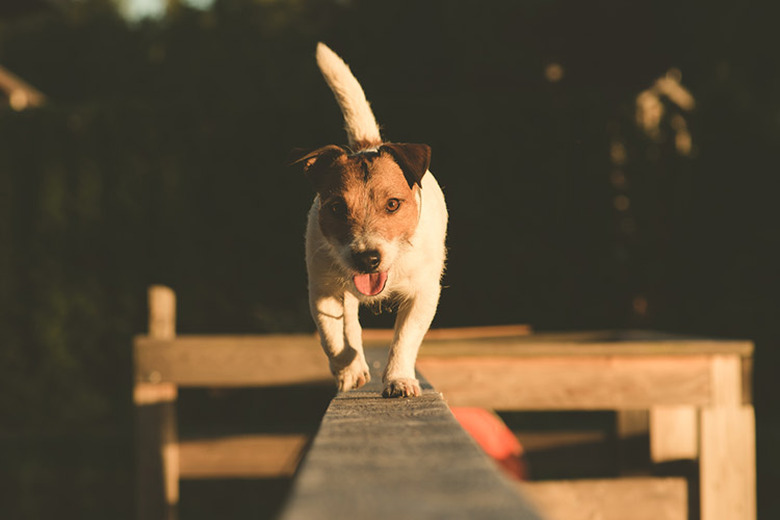Do Dogs Use Their Tails For Balance?
Dog breeds with docked tails might seem to go through life just fine with only a stump of a tail. However, the official policy of the American Veterinary Medicine Association opposes cosmetic tail docking, and only considers the procedure justified if it is for medical reasons. Part of the reason is that dogs' natural tails are considered essential to their balance, movement, and communication.
Dog jobs that require tails
Dog jobs that require tails
Although dogs with naturally bobbed or artificially docked tails don't appear to have a physical or psychological disadvantage per se, some dogs rely on their tail to do their jobs. Working dogs use their tails when performing certain tasks, and in some breeds, that means carefully maintaining balance while performing their particular job.
Sighthounds such as greyhounds, Salukis, and Afghans have long whip-like tails that allow them to counterbalance as they quickly change direction when in pursuit of prey. Retrievers and other water dogs use the tail like a powerful rudder to change directions in the water. Huskies and other breeds that work in cold environments use their tail to keep their nose and face warm at night.
Some hunting dog breeds with long tails traditionally have their tails docked. Although one traditional reason for removal is that dogs' tails could be injured while pursuing prey through the underbrush, it is kenneled hunting dogs that traditionally sustain more injuries to the tail.
Dog tails for everyday balance
Dog tails for everyday balance
Watch your dog trot across the smooth kitchen floor and you'll see your dog using their tail for balance. When they turn a corner, for example, their front legs will go in the new direction they're taking. The rear legs continue trotting in the original direction. Meanwhile, the tail also turns in the new direction. Together, by using the front feet as steering and the tail as a rudder, the dog completes its turn to the new direction.
Even dogs with docked tails or born without a tail use this natural method of navigation, although it's not as obvious. Dog breeds such as Australian stumpy tail cattle dogs, Pembroke Welsh terriers, Jack Russel terriers, and Schipperkes are all examples of dogs who can be born with short tails or none at all.
Dog tails for communication
Dog tails for communication
Most dogs need their tails as communicative tools. Dogs communicate primarily through body language, and the tail speaks volumes. A loose, naturally-wagging tail often demonstrates happiness, while a tail tucked between the legs indicates trepidation.
If a dog holds his tail stiff, he may be communicating agitation. Sometimes, the body language is breed-specific — for example, a pug's tail is naturally curly when he's content, and straightens out when he's nervous or upset.
Dogs who have "stumpy" or docked tails naturally still use their tails for communication. You might see your dog's little "nub" of a tail vibrating furiously back and forth when he's happy to see you or point straight up at the ceiling when he's suspicious of an approaching stranger.
Dog breeds with docked tails
Dog breeds with docked tails
Tail docking is the process of surgically amputating all or part of a dog's tail. This is a painful procedure and is generally carried out on working dogs, for whom having a tail could be considered an unnecessary risk. Tails are generally docked within 72 hours after birth before a pup's nervous system fully develops. Older dogs who need their tails removed for therapeutic reasons have an anesthetized surgery.
For example, guard dogs may have their tails docked because the tail is vulnerable when fighting off a wild predator. Rottweilers, Dobermans, and boxers are examples. For this same reason, dogs used in illegal dog fighting such as pit bull breeds also commonly have their tails docked.
Other working breeds, like hunting dogs, may similarly have their tails docked to avoid injury. Airedales and other terrier breeds are pulled by their tails from burrows where they pursue small animals. Two-thirds of the tail is sturdy but the third of the tail near the tip is prone to fractures and splitting. Dogs who have their tails docked generally suffer no physical disadvantage.
